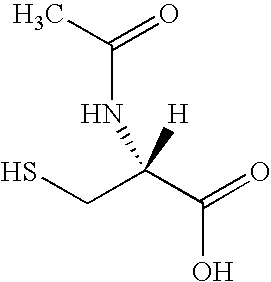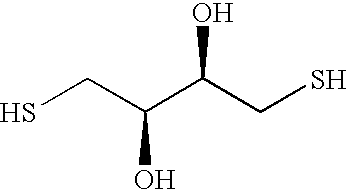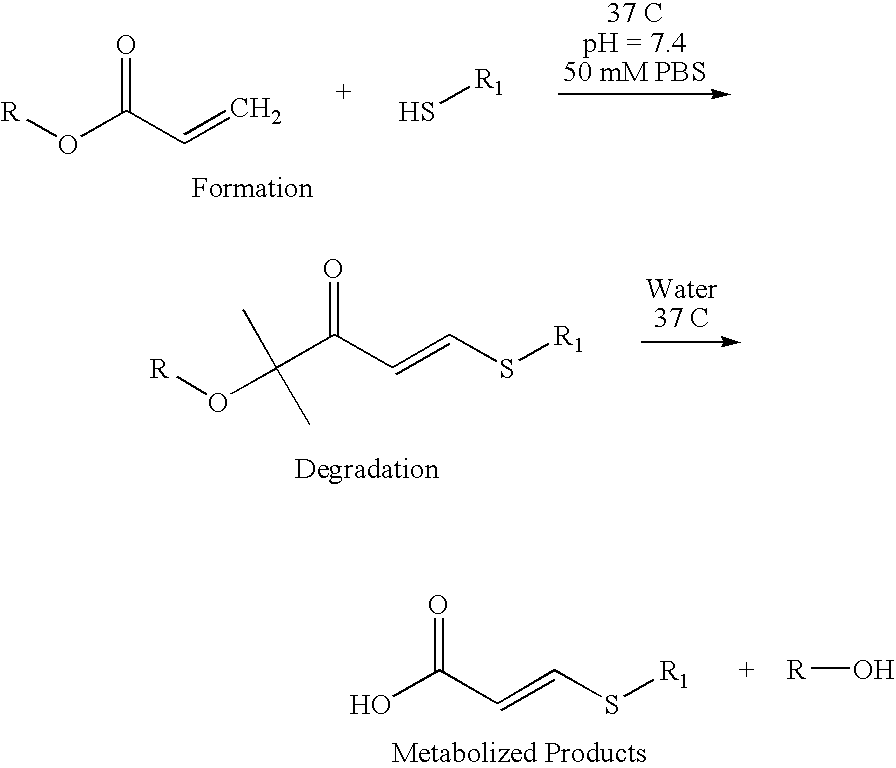Swellable particles for drug delivery
- Summary
- Abstract
- Description
- Claims
- Application Information
AI Technical Summary
Benefits of technology
Problems solved by technology
Method used
Image
Examples
example 1
Synthesis of PEG Hydrogel
[0052] An eight-arm, hydroxyterminated PEGs with total number average molecular weights (Mw) of approximately 10 and 20 kD are acrylated to a degree of functionalization exceeding 95% after azeotropic distillation followed by reaction with acryloyl chloride in the presence of triethylamine as has previously been described by Elbert, D. L., et al., Self-selective Reactions in the Design of Materials for Controlled Delivery of Proteins. Journal of Controlled Release, 2001. 76: p. 11-25. Hydrogels are formed by mixing the chosen PEG-acrylate with either dithiothreitol or PEG-dithiol, Mw 3.1 kD at a 1:1 stoichiometric ratio of acrylates to thiols in 50 mM phosphate buffered solution (PBS, pH 7.8). Each reactant is dissolved separately in an aliquot of PBS. The amount of PBS is varied to give the desired total precursor concentration (wt %) upon mixing. The two solutions are mixed vigorously in 1.5 mL plastic tubes and centrifuged to remove bubbles. The sealed t...
example 2
Dual Action Mucolytic-Therapeutic Drug Delivery Vector for Cystic Fibrosis
[0057] From the moment an aerosolized drug is expelled from the metered-dose inhaler or nebulizer and enters the mouth, through its journey past the pharynx, down the trachea and bronchioles into the deeper recesses of the airways toward its site of action, and finally to its degradation and removal, aerosolized agents are under the influence of a multitude of factors, which may be grouped into two general categories. Those determinants which govern the deposition of the aerosolized agent onto the airway lumen surface are termed physical properties, and include a particle's diameter and density. The properties that determine the fate of the drug subsequent to its impaction on the luminal surface, including its absorption, metabolism and excretion, are referred to pharmacokinetic factors.
[0058] Accordingly, the physical and pharmacokinetic factors of an aerosolized particle must be precisely tailored to compl...
PUM
| Property | Measurement | Unit |
|---|---|---|
| Fraction | aaaaa | aaaaa |
| Diameter | aaaaa | aaaaa |
| Diameter | aaaaa | aaaaa |
Abstract
Description
Claims
Application Information
 Login to View More
Login to View More - R&D
- Intellectual Property
- Life Sciences
- Materials
- Tech Scout
- Unparalleled Data Quality
- Higher Quality Content
- 60% Fewer Hallucinations
Browse by: Latest US Patents, China's latest patents, Technical Efficacy Thesaurus, Application Domain, Technology Topic, Popular Technical Reports.
© 2025 PatSnap. All rights reserved.Legal|Privacy policy|Modern Slavery Act Transparency Statement|Sitemap|About US| Contact US: help@patsnap.com



